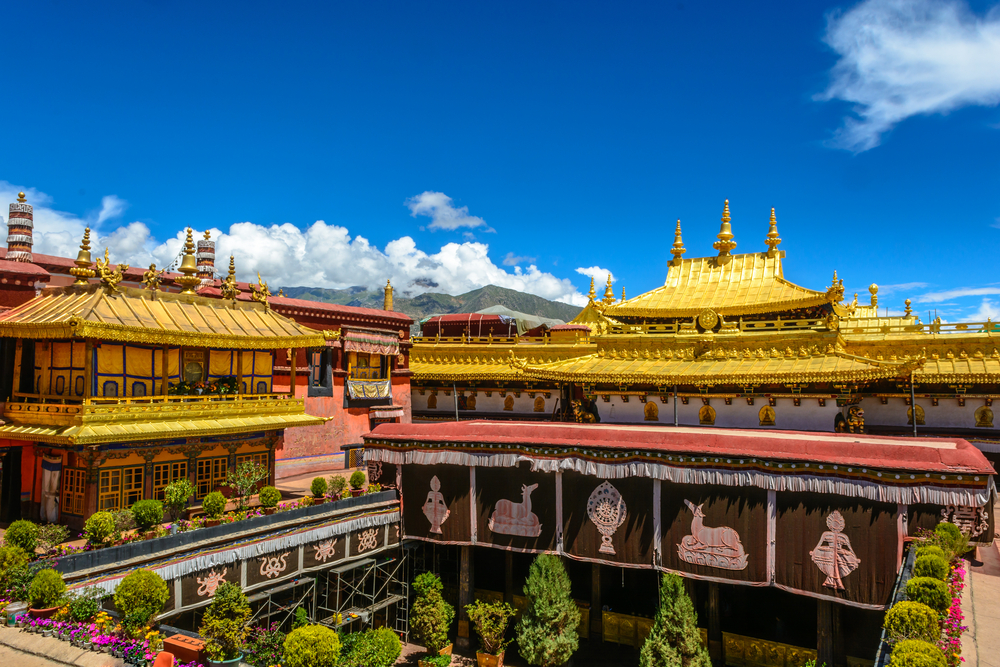Must-visit places in Tibet
 Weather forecast of Lhasa, China
Weather forecast of Lhasa, China





Share the article:
Recommended Related Article:
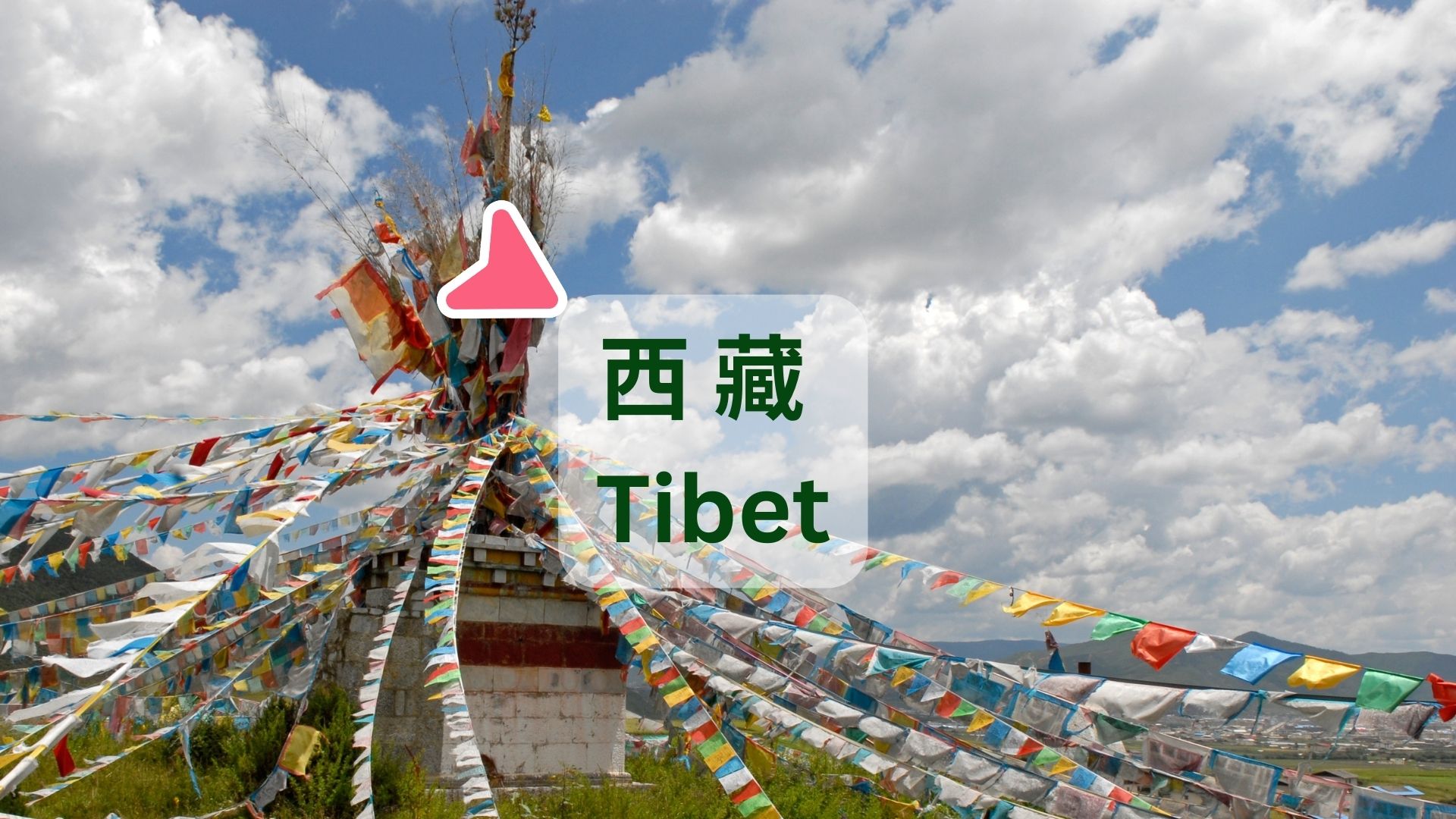
Must-visit places in Tibet
To travel to Tibet and experience the grandeur of the Potala Palace from a close distance must be the desire of many people. Apart from the Potala Palace, there are many other places in Lhasa that are worth visiting, such as the Dazhaosi Temple, which is not far away from the Potala Palace. Also not to be missed is Namtso, the second largest lake in Tibet.
Follow 【GreaterGo】 to start your Tibet journey here.
Potala Palace
When it comes to Tibet, people always think of the magnificent palace on Marpori (Red Mountain) in the north-western side of Lhasa – the Potala Palace.
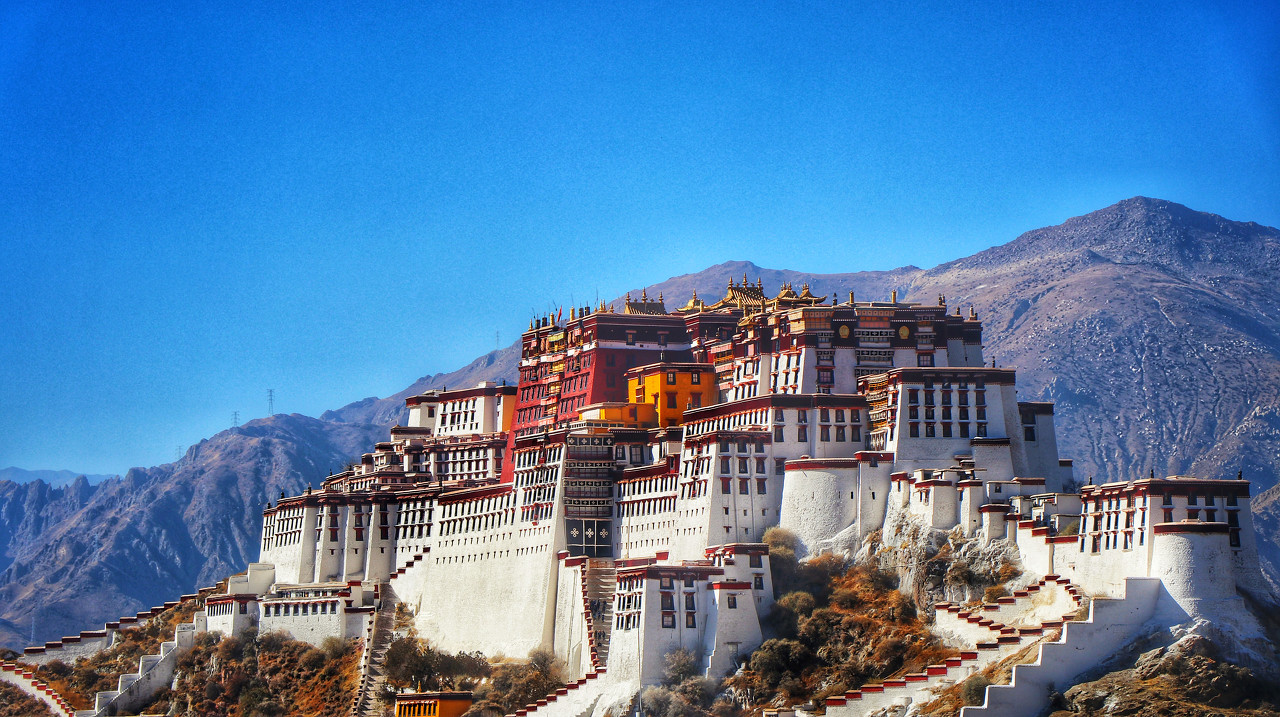
At the beginning of the seventh century, Songtsen Gampo unified Tibet and established the Tibetan Empire. The emperor built approximately 1,000 palace houses in different scales on Red Mountain and named the place “Potala” which refers to the residence of Guanyin in Buddhist texts. More than 200 years later, the Tibetan Empire fell, and the Potala Palace was almost completely destroyed with only two Buddhist temples remained.
Not until the 17th century did Lhasa become the political centre of the Qinghai-Tibet Plateau again. The Potala Palace was reconstructed and continuously expanded. The “White Palace” (PotrangKarpo) for all generations of the Dalai Lama, “Red Palace” (PotrangMarpo) consisting of the palaces that contain the tombs of the Dalai Lamas and other Buddhist temples, corridors and gardens were built during this period.
Starting from the fifth Dalai Lama, all the Dalai Lamas have resided in the Potala Palace. Important religious and political ceremonies were held in the palace, making the venue the centre of Tibetan caesaropapism. The grand Potala Palace, built on the hill, exhibits the distinctive Tibetan Buddhist and Tibetan architectural styles. The exterior of the palace was painted in red, white and yellow which represent solemnity, tranquillity and completion respectively.
Jokhang
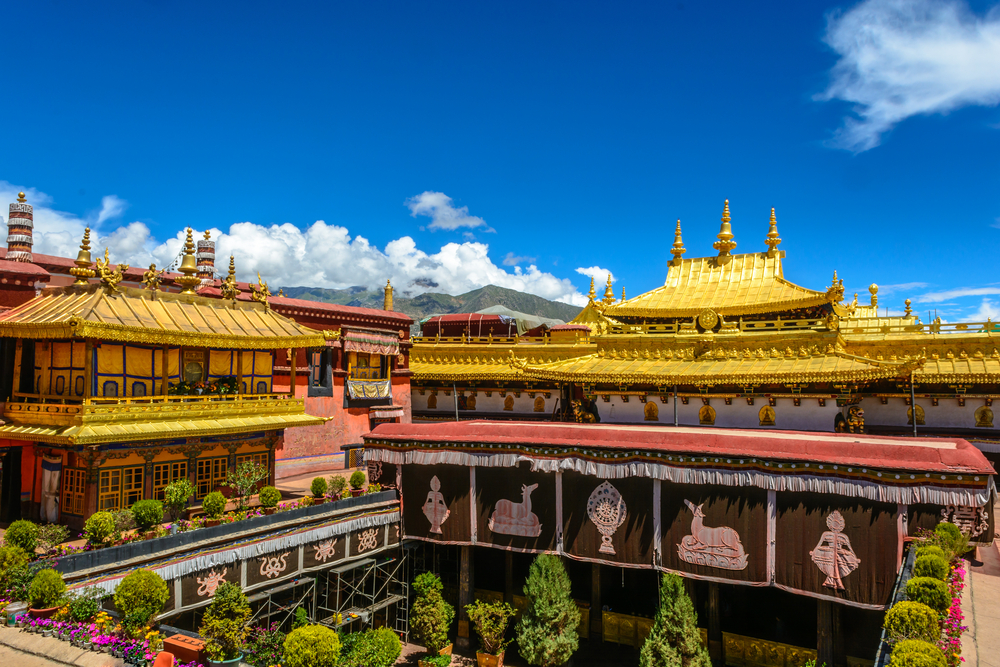
The Jokhang is the "spiritual heart" of Lhasa and the supreme sanctuary of Tibetan Buddhism. After Songtsen Gampo established the Tibetan Kingdom, the dynasty prospered. Then, there were marriages of state between him and Princess Wencheng of the Tang dynasty and Princess Bhrikuti Devi of Licchavi. It is said that the Jokhang is dedicated to the several Buddha statues brought by the two princesses from their homelands.
Princess Wencheng brought an image of 12-year-old Shakyamuni Buddha and Princess Bhrikuti brought a wooden Buddha statue. The two statues are still being worshipped in the Jokhang. According to Buddhist legends, when Songtsen Gampo died, his soul became a beam of light and entered the wooden statue.
During the Cultural Revolution, the Jokhang could not escape from destruction. Many Buddha statues were destroyed. The temple even became a pig slaughterhouse. It was highly disrespectful as Tibetan Buddhism strictly prohibits monks and nuns from slaughtering for satisfying their desire for meat.
Tibetans were allowed for worshipping the Jokhang after the Cultural Revolution. The temple has been reconstructed for multiple times and is now a must-visit attraction in Tibet.
Sera Monastery
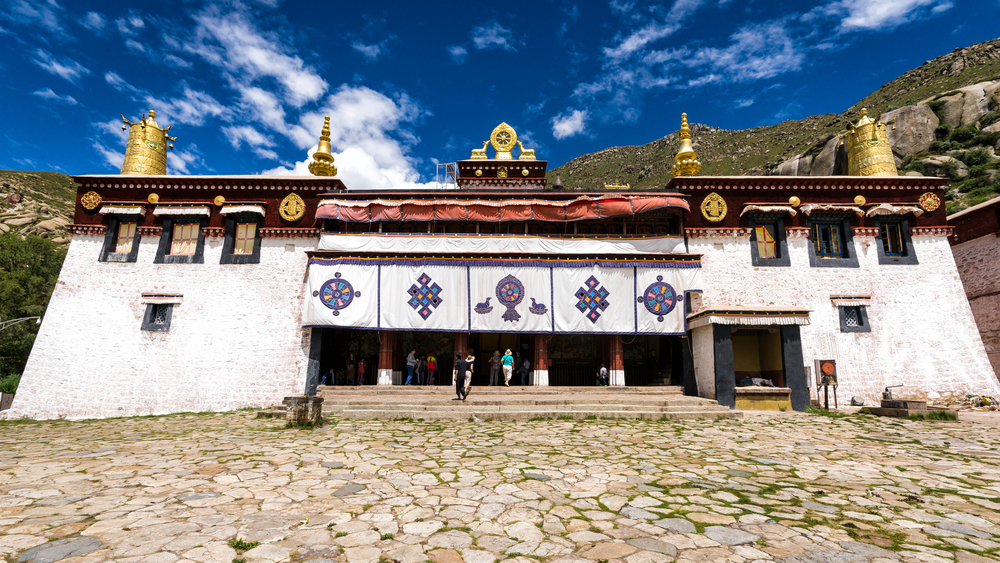
In the early 15th century, Shakya Yeshe who was given the title of Jamchen Choje, meaning Dharma Lord of Great Compassion, by Emperor Xuande founded Sera Monastery. During the monastery’s heyday in the 17th century, there were 5,500 monks, turning it into a significant university monastery. Around 600 lamas are living in the monastery now.
Witnessing the Tibetan Buddhist debate is definitely on the must-do list for your visit in Sera Monastery. Tibetan Buddhist debate is not exclusive to Sera Monastery, but the debate here is held every Monday to Friday from 15:00-17:00. Moreover, it is the most famous one because it is open to the public.
Hundreds of lamas gather at the open area of the monastery. Some express their views passionately; some discuss in small groups in a low voice. Lamas sometimes shrug reluctantly; sometimes applaud; sometimes frown and are sunk in thought; sometimes gesticulate joyfully after acquiring new knowledge. Although most tourists do not understand the debate due to language barriers, the amusing scene still allows them to understand the lamas’ pursuit of knowledge in Buddhism.
Drak Yerpa
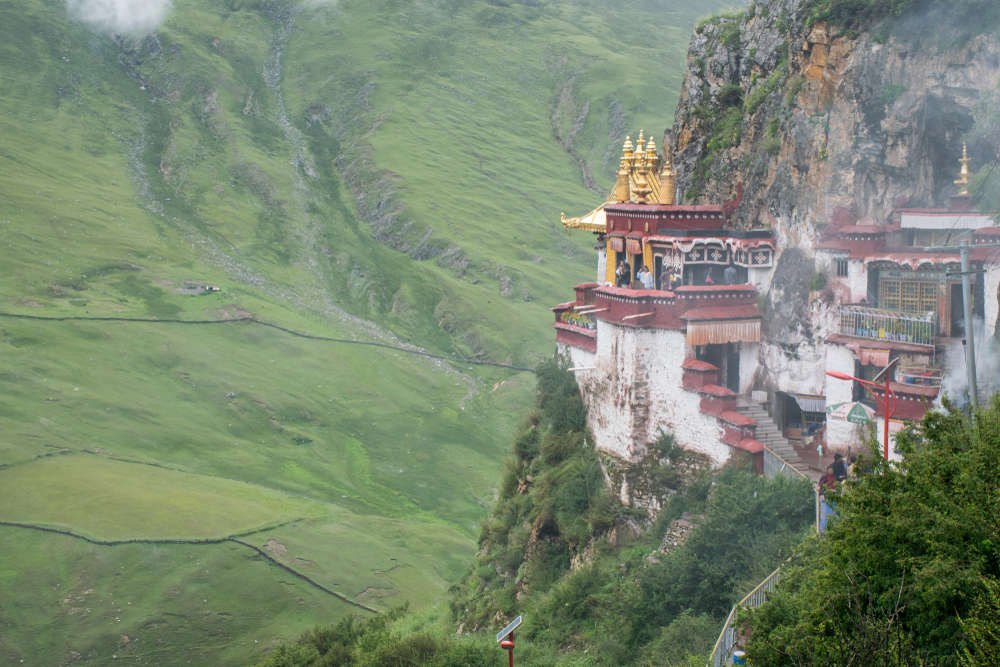
Drak Yerpa is one of the four propitious places for hermits in Tibet. A Tibetan ballad sings, "The auspicious place of Tibet is Lhasa, and the propitious place of Lhasa is Yerpa; reaching Lhasa without having visited Yerpa is like making a new cloth without a collar.” Drak Yerpa is located in the Yerpa Valley, about 30km north of central Lhasa. Built on the hillside, Drak Yerpa is like being embedded into the cliff. According to legend, there are 108 meditation caves here. Yet, there are only around 80 in fact.
Legend has it Songtsen Gampo, Indian Buddhist master Padmasambhava and Indian Buddhist master Atiśa (whose ideas formed the foundation of the Kadam school) once isolated themselves from the outer world to have Sādhanāin the meditation caves of Drak Yerpa.
Namtso
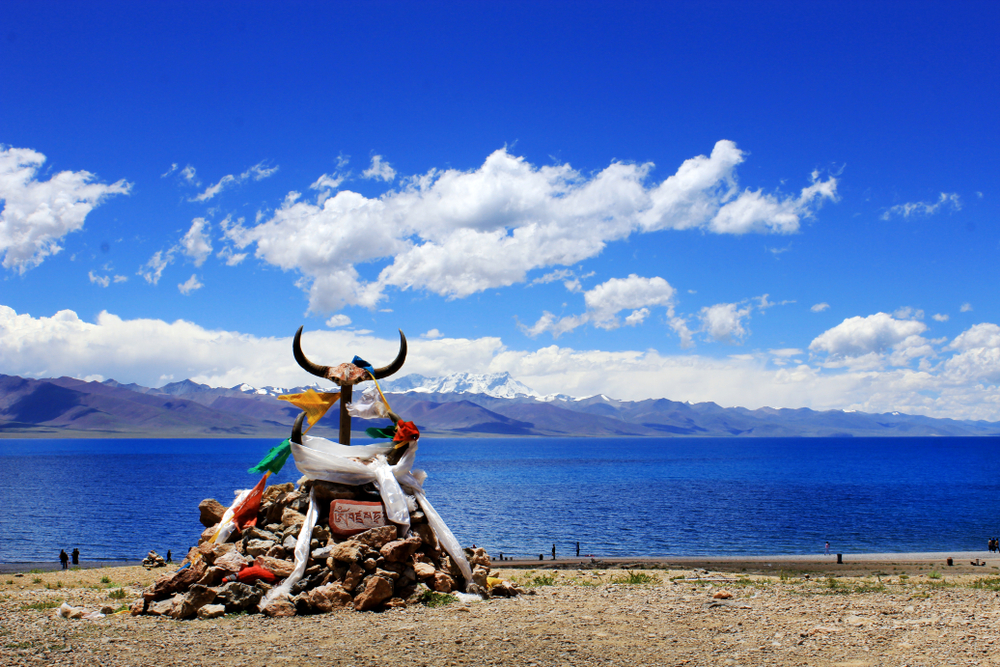
Namtso is the second largest lake in Tibet. It is on the Qinghai-Tibet Plateau and roughly a four-hour drive away from Lhasa. There are many travel agents in Lhasa that provide day-return and two-day-one-night tour bus services to Namtso.
The lake is crystal clear. Surrounded by snow mountains, the view of Namtso is spectacular. Many visitors do not mind spending a bit to ride yaks along the lake. “Namtso” is Tibetan, meaning the “heavenly lake”. The lake was named after folklore and Buddhist legends. There are five islands in the lake and they are believed to be the incarnation of the Five Tathagatas. According to folklore, Buddhas and Bodhisattva gather in Namtso for ceremonies in every Year of the Sheep in the Tibetan calendar. If Buddhists circle the lake while praying and reciting Buddist texts at that time, the effect would be a lot greater than praying on other days. In this way, the kindness and merits are beyond bounds.
Useful Information
1. How to get to Lhasa?
There are three ways to get to Lhasa, by plane, train, or overland. Traveling by flight to Lhasa from mainland China is fast and efficient, but does not give you a chance to acclimatize the altitude environment. Airfare is a little expensive, which is largely due to the huge demand.
Traveling by Tibet train is one of the most spectacular ways to get to Lhasa. The train travels across parts of China and stretches from the Tanggula Mountains in the far north to Lhasa. It takes a long ride around 22-55 hours but the breathtaking scenery along the way makes the trip quite worthwhile.
2. Can I Head to Everest Base Camp (EBC) Directly without Adjusting to the High Altitude in Lhasa?
It's very important to wait for your body to adapt to the high altitudes in Lhasa and then start your adventure to other places of Tibet like EBC.
Lhasa has an altitude of 3656m, whereas the Tibet Everest Base Camp is situated at an altitude of 5200m. A sudden elevation rise might cause altitude reaction.
Basically, 3 days are enough for most travelers to get over most initial symptoms of altitude sickness, including headache, dizziness, fatigue, loss of appetite, disturbed sleep, etc.
3. Why I Plan Lhasa Visit with a Tibetan Travel Agency?
It is better to book a Lhasa trip through a local travel tour operator.
There are two main reasons to explain this. Firstly, a local travel agency provides Tibetan guides who are born and raised in Tibet. They are the only ones who can show you the most authentic Tibetan culture, scenery, and local custom.
Secondly, the local tour operator offers a more reasonable price. No middle commission fee will be charged.
Useful information provided by: tibettravel.org
Recommended Related Article:


